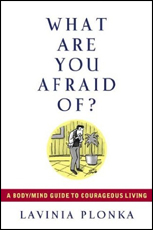"There is a Japanese folktale about a man who had a huge, hideous growth on his face. Fearful of ridicule and rejection, he avoided everyone in the village and spent a miserable, impoverished life as a maker of charcoal. Each day, he'd go into the woods and gather sticks, bringing them home, and burning them into charcoal, from which he and his wife eked a meager living.
"One day, while gathering his sticks, a terrible thunderstorm appeared out of nowhere. The man dashed for shelter inside the hollow of a large old tree. When the storm finally passed, it was night. Just as he was about to venture out into the night, he heard some very strange sounds. Right in front of his eyes was a bizarre gathering of hobgoblins, dwarves, and other mutated creatures. Some had three legs; others had eyes dangling from their heads on stems. These creatures were various colors, some were furry, all were unquestionably hideous from the ordinary point of view. It was a party, and soon the drumming and dancing ensued. The charcoal burner watched in delight as the music built and the hobgoblins danced. His feet started to itch to join them. But he was afraid they might devour him. He stood in the tree hollow, listening to the music, until he couldn't bear it anymore. He burst out of the tree hollow and began to dance. He was brilliant. The hobgoblins all stared in admiration as the charcoal burner flipped and twirled, basically stealing the show. When the dance was over, the creatures begged him to return the following evening, they had never seen such a talented human. They demanded a pledge for his return. To them, his unsightly tumor was an incredible asset. They insisted he leave it behind to ensure his return! Suddenly, his growth was gone. He ran home, the happiest man in the world. But even better, the bottom of his charcoal basket was filled with gold. The charcoal burner became the wealthiest man in the village. By letting go of his fear of rejection, he had discovered his true currency: his talent for dancing. And he learned that even his tumor had value — for the right audience."
